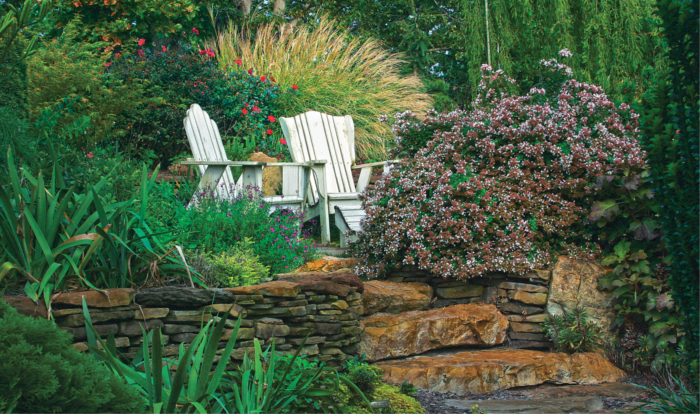
Pablo Picasso said something to the effect of, “Bad artists imitate. Great artists steal.” The same quote is often attributed to Igor Stravinsky and T. S. Eliot. Whoever said it, the other artists stole the quote, almost as if to prove its point. The same sentiment has been echoed by such creative people as David Bowie, Steve Jobs, and Quentin Tarantino.
We gardeners know this idea well. After all, isn’t that why we go on garden tours and read gardening magazines? All the things you need to know to make your garden amazing are most likely already being done in someone else’s garden. So here are some cool ideas to take home to your garden, and if anybody complains, just quote Picasso. Or Stravinsky.
1. Use Furniture as a Focal Point
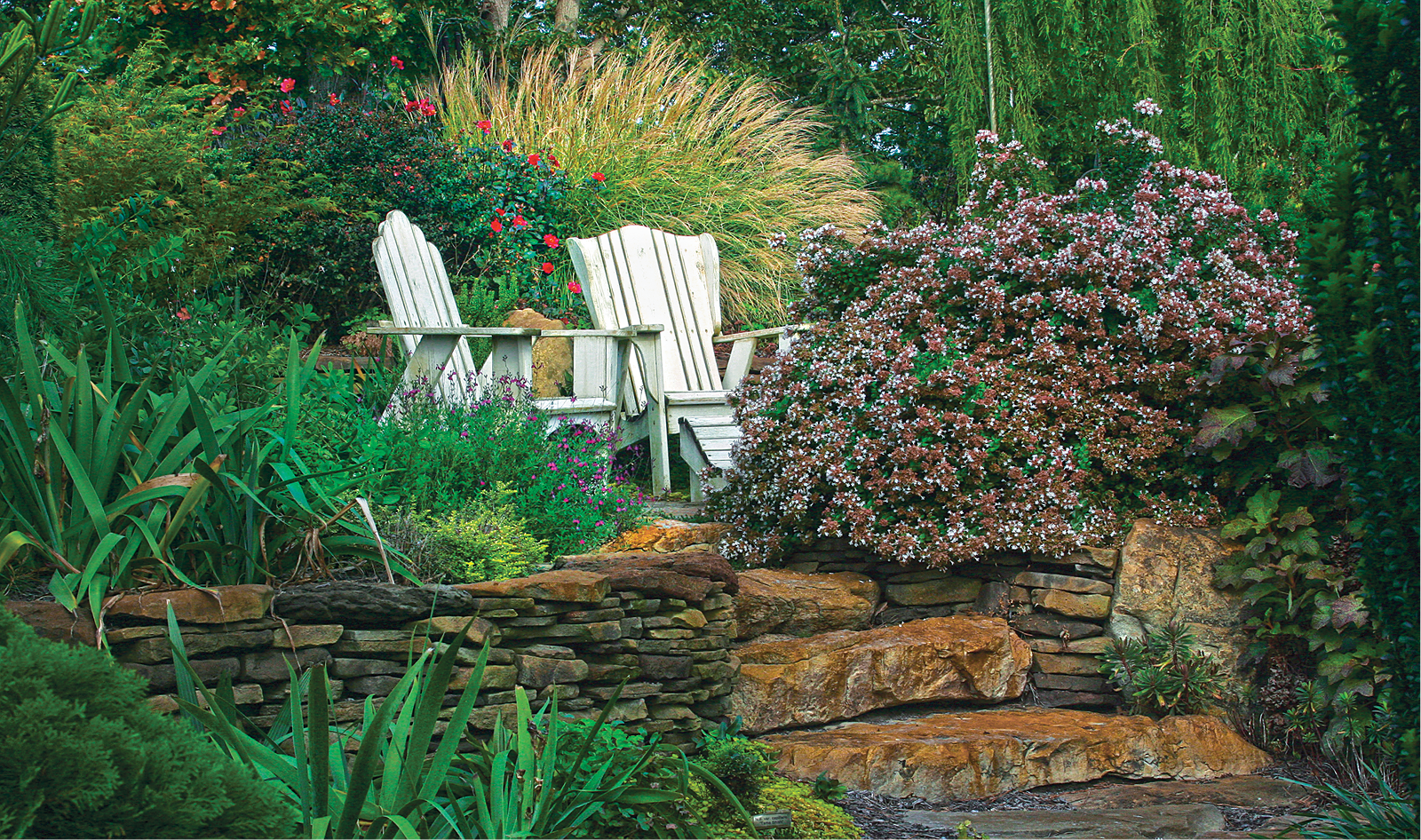
Often, a container planting or a plant with amazing foliage or flowers is the focal point of a view—that thing that draws your eye and orients everything around it. But those take upkeep or expand and diminish with the seasons. Furniture, on the other hand, requires almost no maintenance and is always there. Plus, it hints of a place to rest, beckoning visitors forward.
2. Let your Hardscape Loosen up
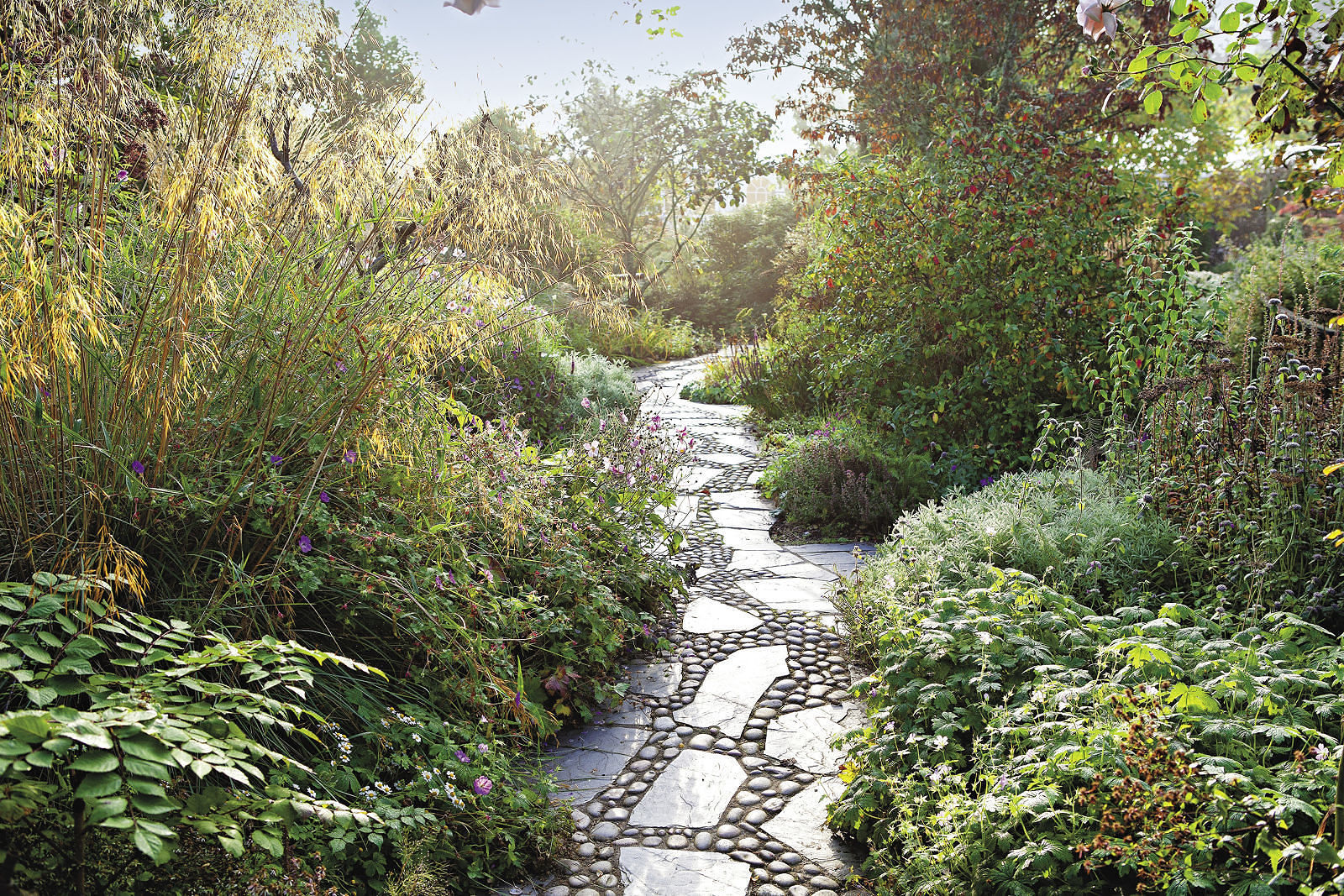
The strong, strictly defined lines of hardscape naturally contrast with loose natural plantings, which is great. But your stone walkway can have a personality that is less “librarian” and more “surfer dude.” This laid-back path is a perfect complement to the plantings that it weaves through. Everything is irregular, from the edges to the shapes and patterns, and it makes the mood just right for wandering, or meandering, or whatever you want, man.
3. Use Nontraditional Materials
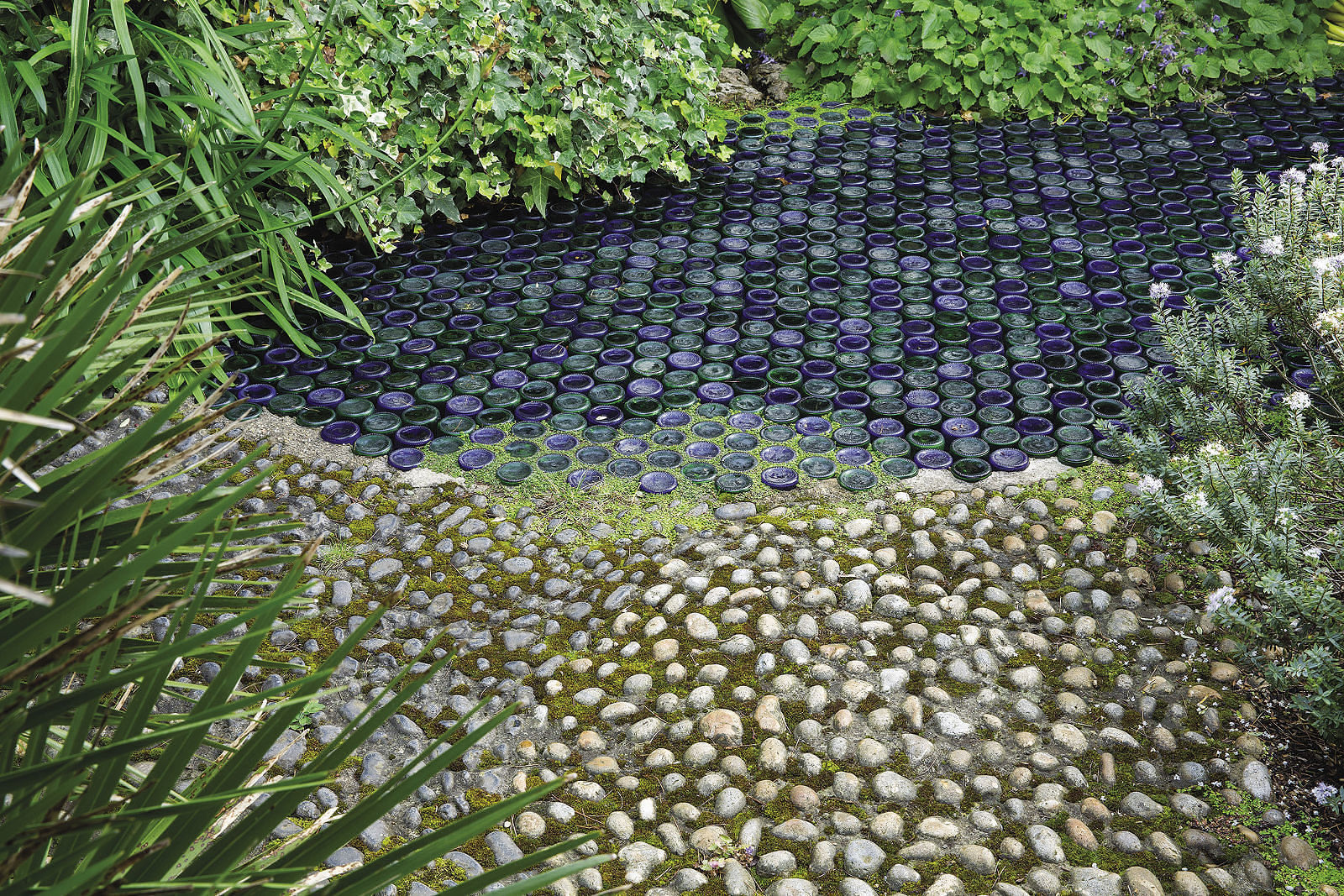
I love a big, beautiful flat piece of blue stone, but it isn’t the only material you can use for a path. Gravel is another common option, but here we see a path of small stones, the size you normally toss aside, set into mortar and gradually giving way to rows of colored glass bottles. The visual patterns they create turn the path into something you want to look at rather than just walk on. I can’t help but wonder, though, if the glass is slippery when wet.
4. Break up a Sea of Foliage
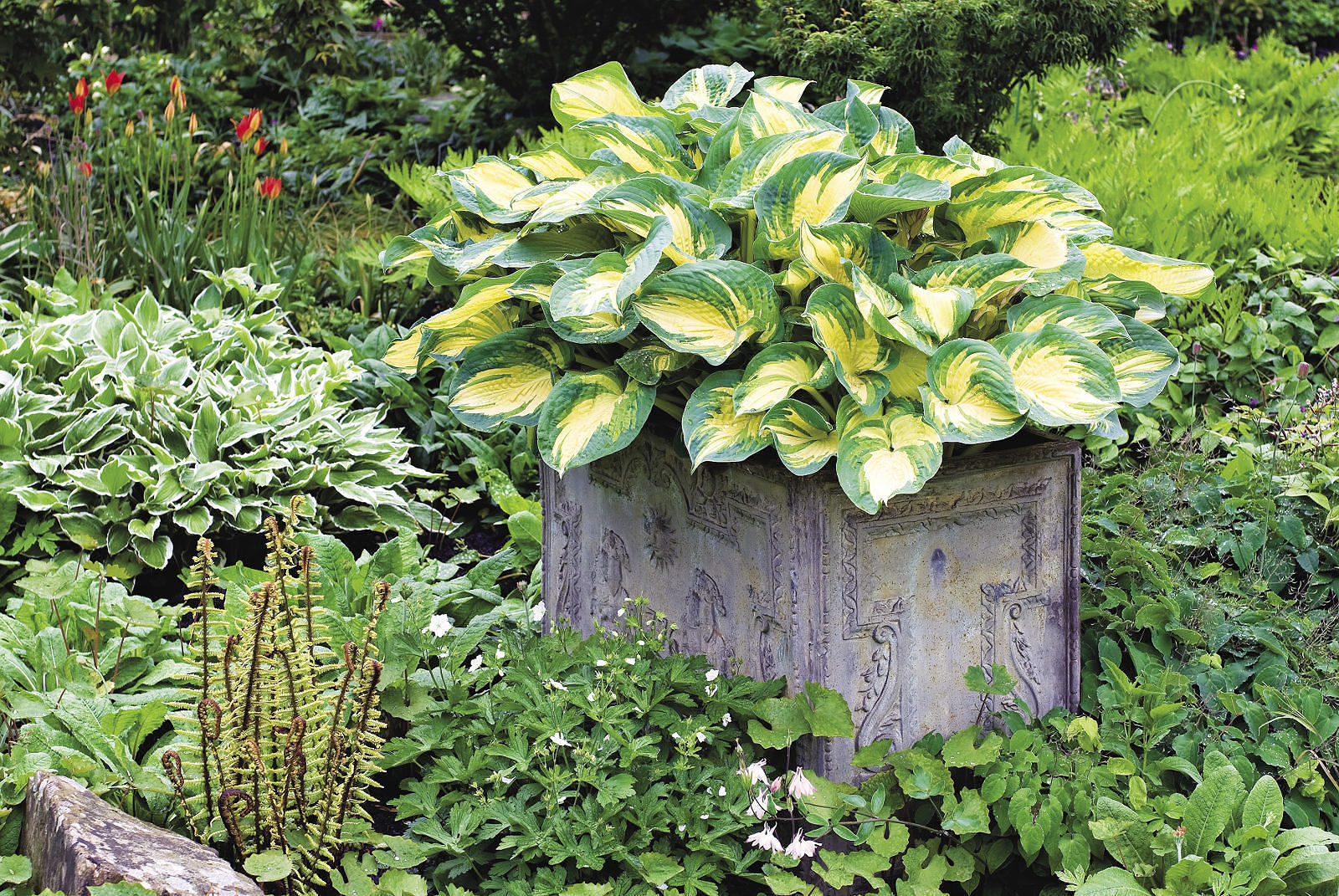
Elevating this ‘Great Expectations’ hosta (Hosta ‘Great Expectations’, USDA Hardiness Zones 3-9) gives it prominence, creating a focal point in a sea of interesting foliage. The shape and style of the container matter, too. Because it is square, the container provides a strong dose of contrast to the scene. Its formal style set in a naturalistic setting indicates the hand of an artist creating a scene rather than Nature pleasingly arranging itself.
5. Think Small
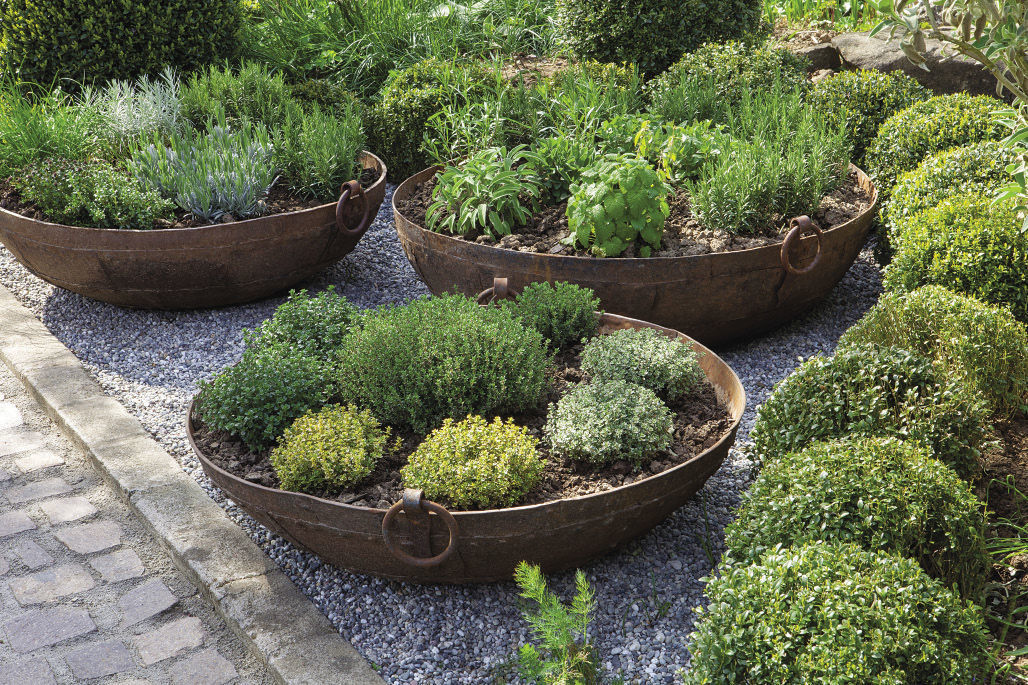
This little container has a couple of ideas worth stealing. First, emphasize strong shapes. The round pot—what is it, an army-size paella pan?—sets the theme, and the circle of circular thymes affirms it.
Second, adding confined moments of a different design style, be it formal (as this is), naturalistic, Asian, or modern, is a great way to enliven your garden and your creativity.
6. Draw Attention to a Cool Combination
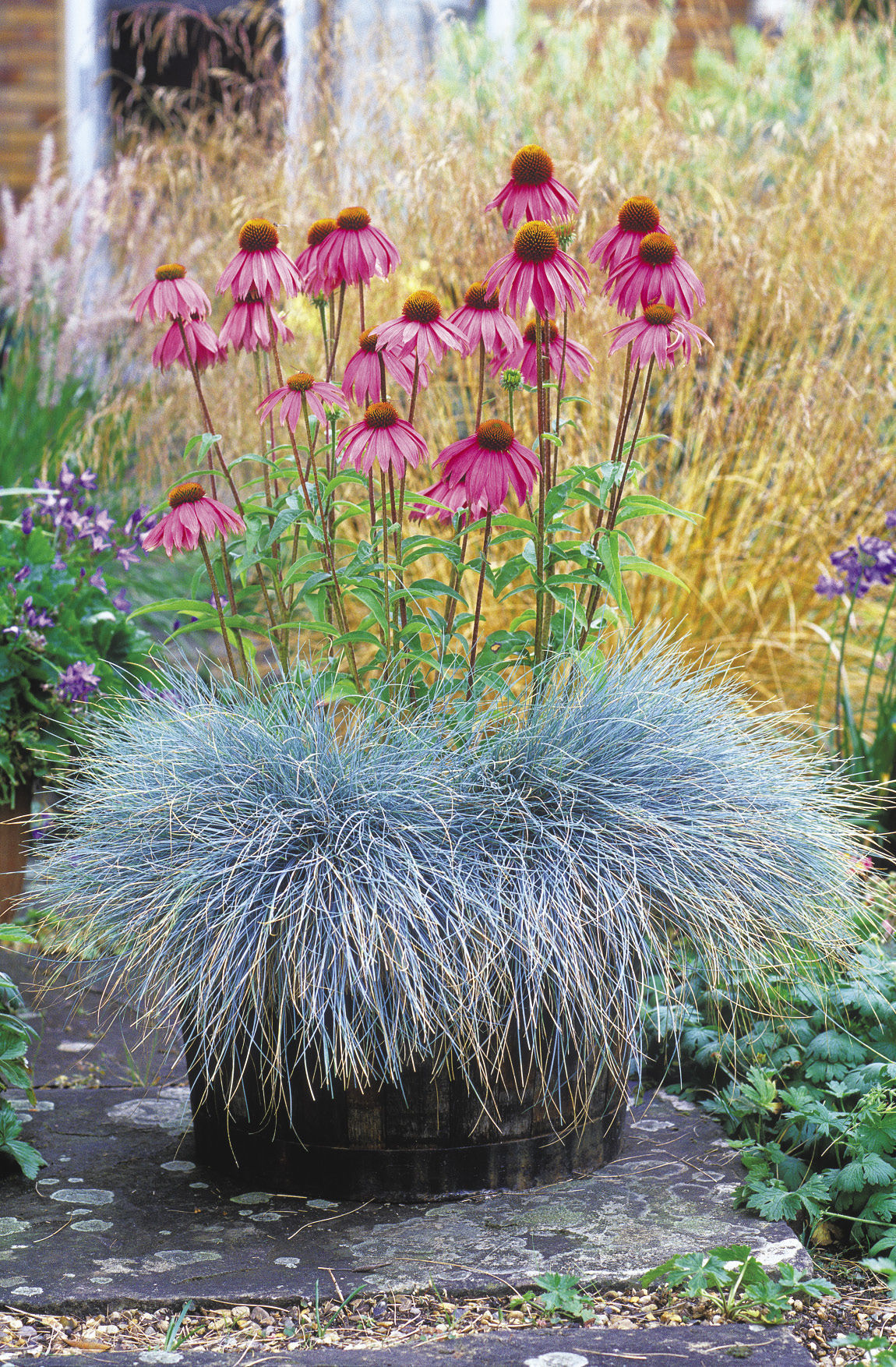
I can’t help but see a pair of big blue fluffy slippers on the feet of the skinny-legged coneflower (Echinacea purpurea ‘Kim’s Knee High’, Zones 3-9). But the point is that small moments or combinations can be lost when they are in a bed surrounded by other plants. When you have a pair this perfect, bring it out of the bed to give it the attention it deserves.
7. Remember, a Room is a Room
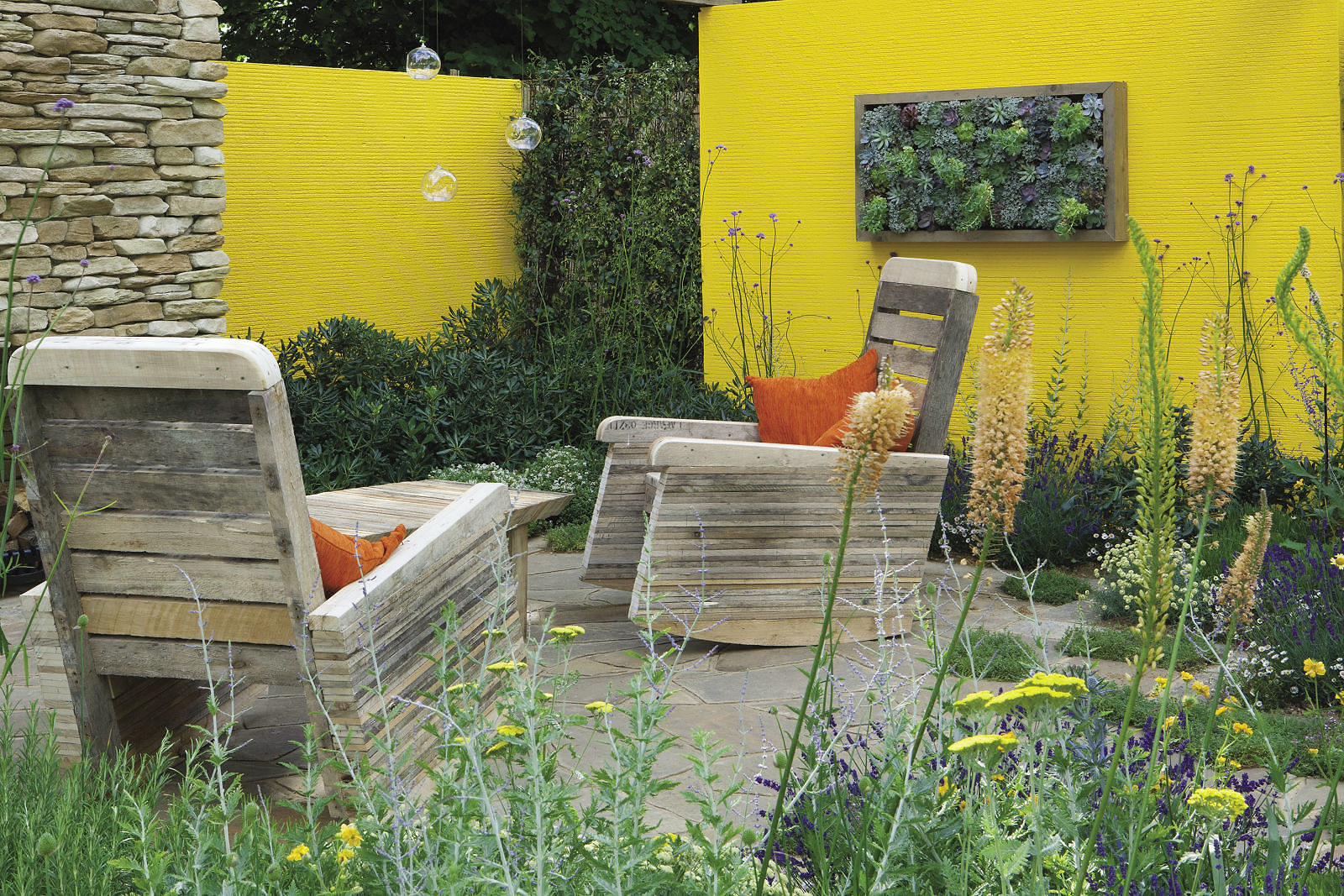
You don’t have to lose the comfort of your living room just because you want to be outside. And similar design rules apply. Two cozy rocking chairs in front of the fireplace, colorful walls adorned with artwork, throw pillows that add dashes of color—are the same elements that make a successful indoor room. What is even better is that you are surrounded by plants that pick up and add to the colors of your outdoor living room.
8. Put Old Tools to Work

This one is as simple as it is charming. Take four old tools (the duller the better), lean them together, and bind them with twine. Now you have the perfect trellis for clematis like ‘The President’ (Clematis ‘The President’, Zones 4-9) or ‘Guernsey Cream’ (Clematis ‘Guernsey Cream’, Zones 4-9).
9. Save your Bottles
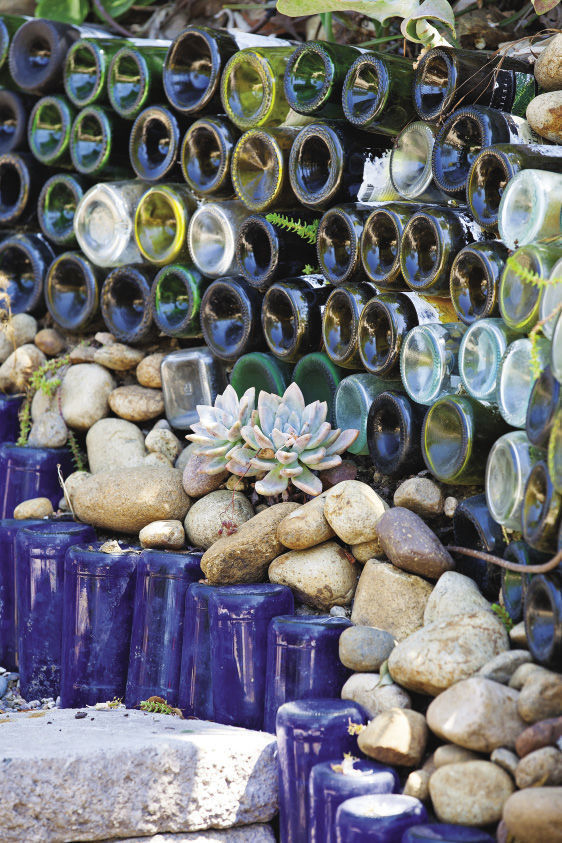
Glass adds an unbeatable texture to the garden, and it is more durable than you might think. it can be used in paths, as edging, and even as a sort of retaining wall. As if you needed a reason to open another bottle.
10. Let Plants be the Hardscape
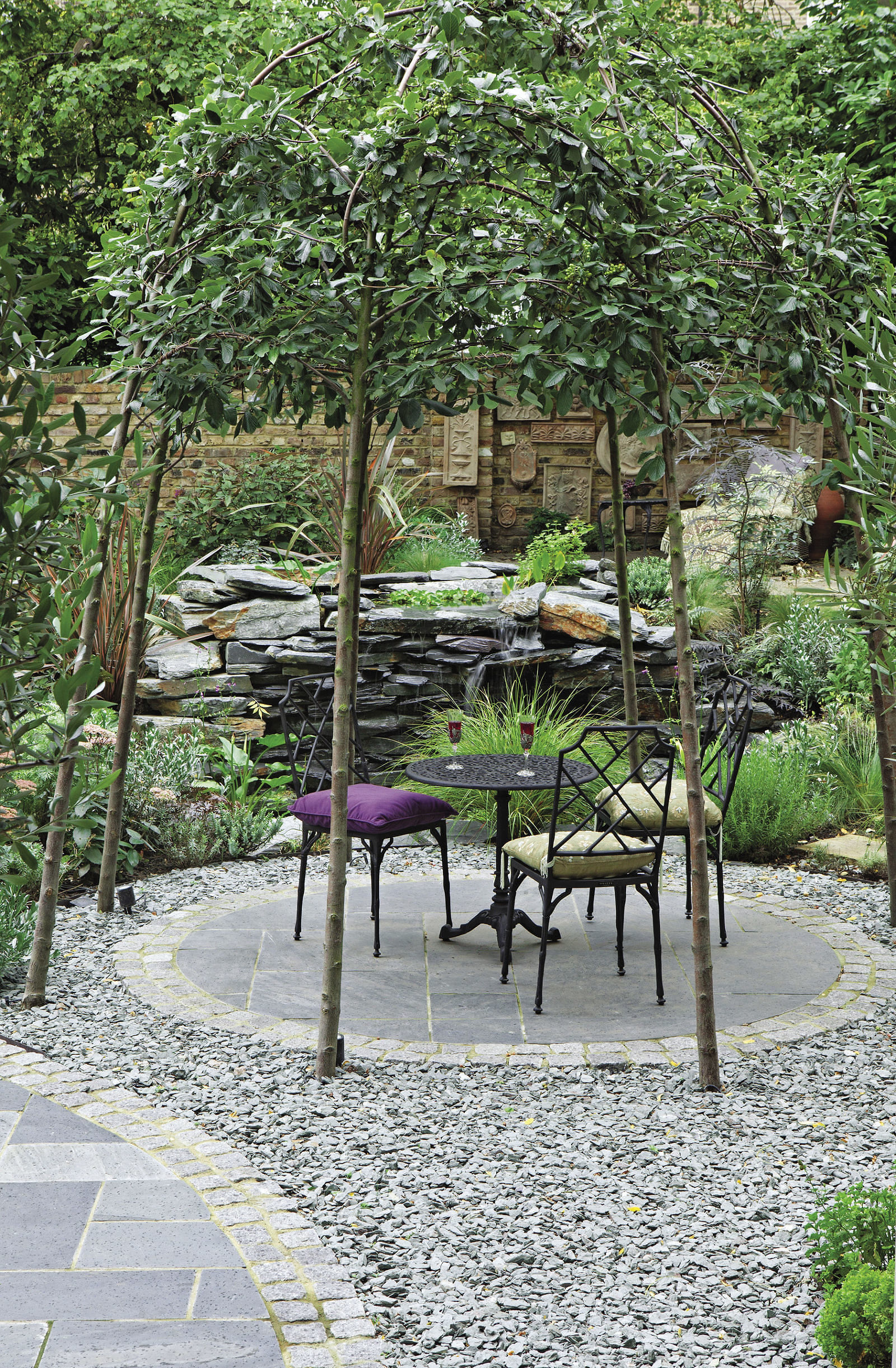
Why build (or hire someone to build) a typical pergola or gazebo? This shelter is still made out of wood—living wood, the kind we gardeners like. A little attention to pruning and weaving of branches can turn a copse of whitebeam (Sorbus aria, Zones 5-8) into the perfect roof for a seating area. Beeches (Fagus spp. and cvs., Zones 3-9) are also suited to this kind of thing.
11. Give Yourself a Place to Rest

With all the work you put into your garden, you certainly need a place to rest. But you can’t just slap a hammock anywhere. Give yourself a place that is secluded and shady, and surround yourself with calming plants. Avoid anything with strong colors or scents in favor of plants like grasses that sway quietly in the breeze.
Put a Succulent in it
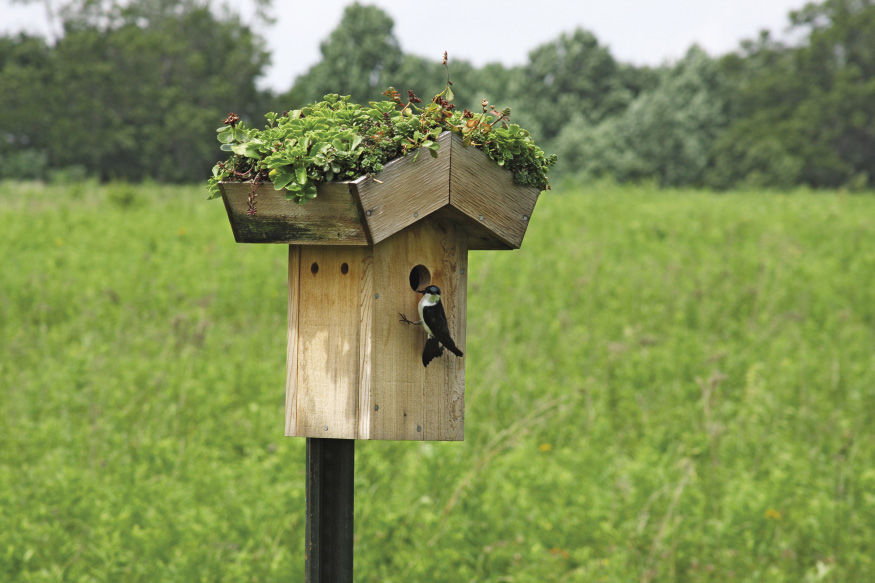
I travel around the country checking out gardens, and one thing always makes me say, “What a good idea! I could do that.” It usually boils down to someone putting a bunch of succulents in something. Often, the vessel is some old bit of something from the house that incurred guilt at the thought of throwing it away. From old boots to frying pans to dresser drawers
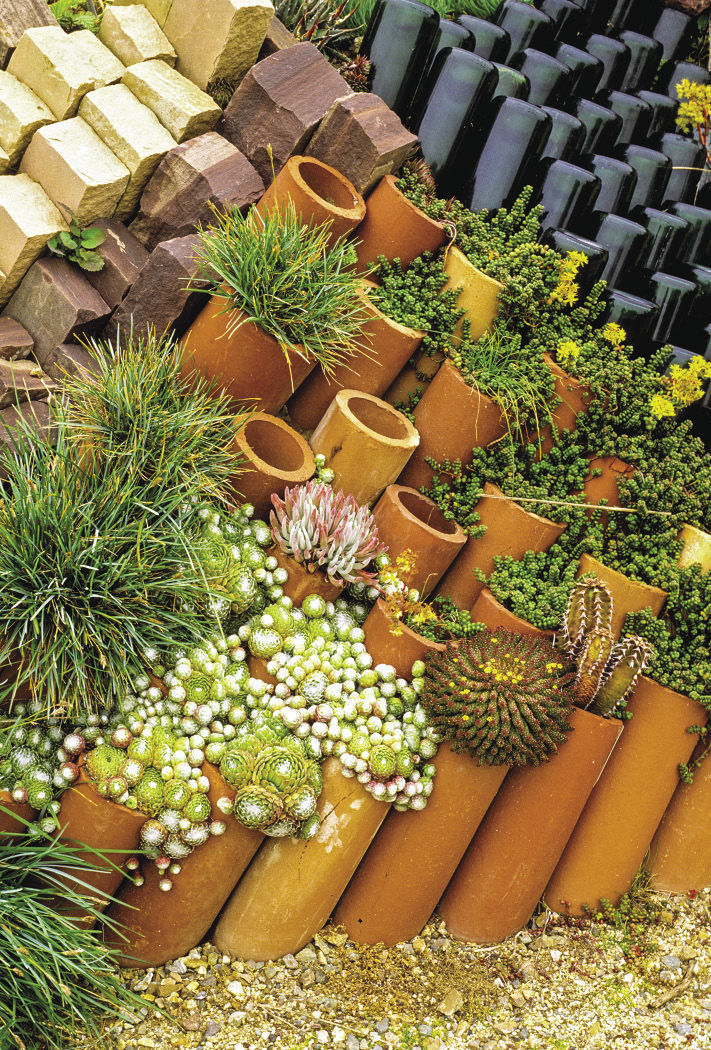
14, instead of trashing something, inspired gardeners turn it into an opportunity to grow a plant.
Succulents are adaptable to tough situations. They don’t like to be watered or fed too much. Many of them don’t mind tight spaces and shallow soil. They are fascinating to look at. And, should you kill a few, they can be refreshingly inexpensive. A planting shelf on a stone wall
15, is certainly a place that dries out quickly and could use a big dose of pizzazz. Succulents are up to the job. The birdies who live in the house with the little green roof
12, certainly appreciate (I would assume) the cooling it provides. And the terra-cotta pipes arranged on an angle
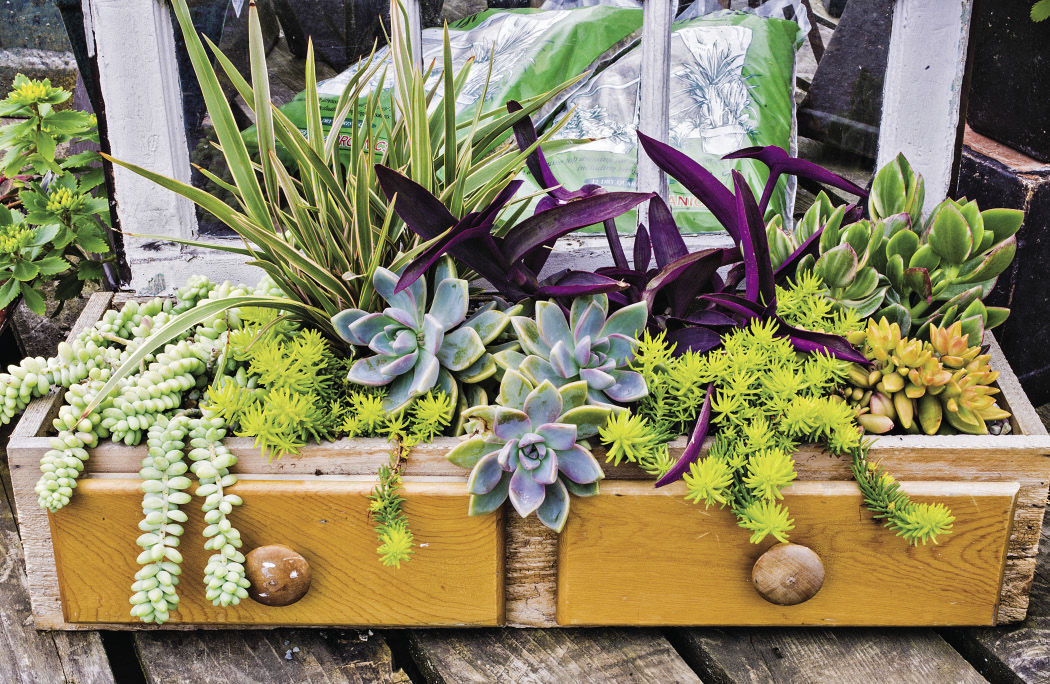
13, make an impact on their own, but when they are overflowing with succulents, the effect is amplified.
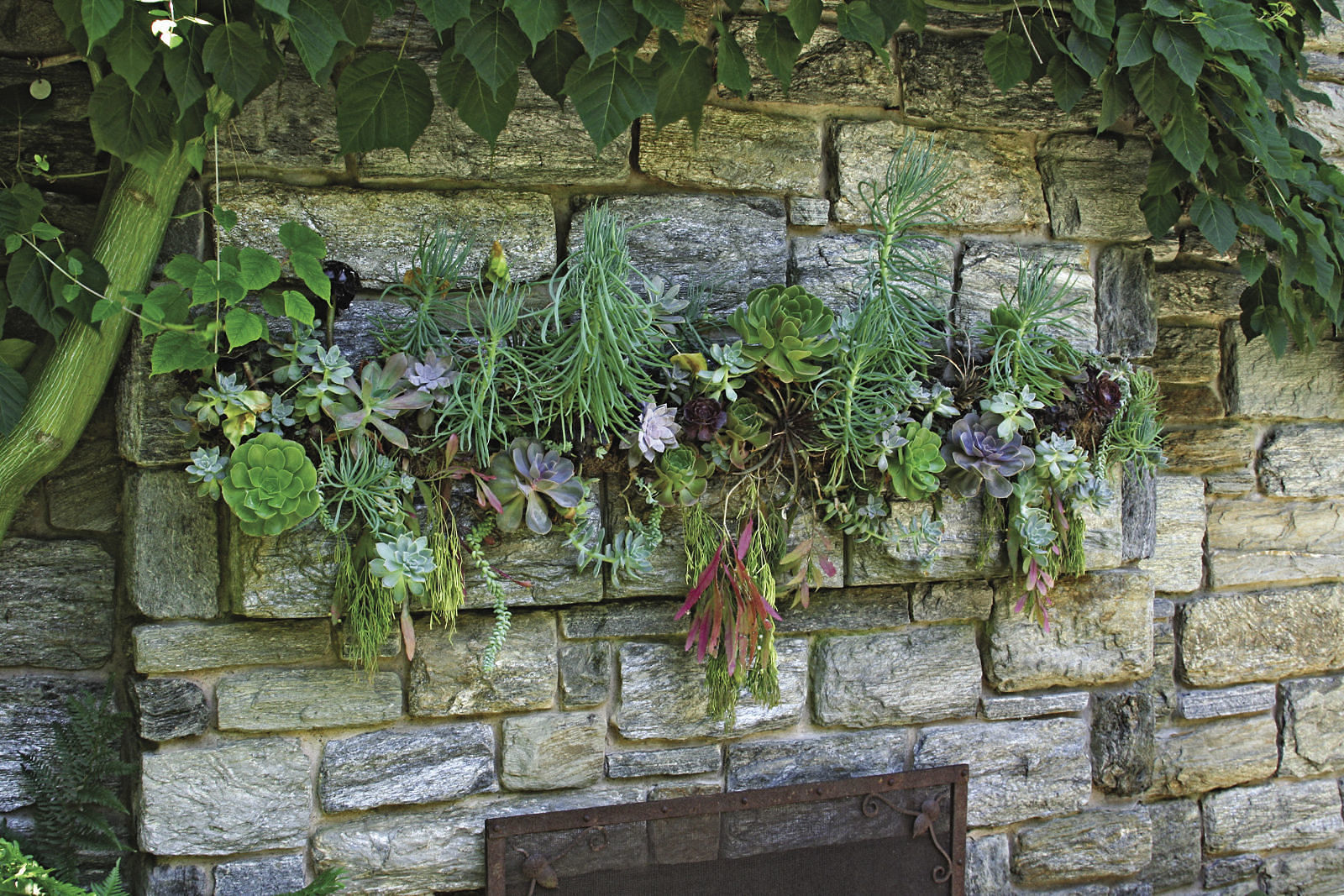
All of these projects are within the reach of the average gardener (well, maybe not the stone shelf thing) and are easily adaptable to the climate. Terra cotta would crack for me in winter, but perhaps metal could work, keeping the succulents in a little pot inside the pipe so they can come in for winter. What a good idea! I could do that.
Steve Aitken is the editor.
Photos: Michelle Gervais; Richard Bloom; Marianne Majerus/Marianne Majerus Garden Images; Stephanie Fagan; Jerry Pavia
Fine Gardening Recommended Products

Planting in a Post-Wild World: Designing Plant Communities for Resilient Landscapes
Fine Gardening receives a commission for items purchased through links on this site, including Amazon Associates and other affiliate advertising programs.

Spear & Jackson 4930FZ Razorsharp Telescopic Tree Pruner
Fine Gardening receives a commission for items purchased through links on this site, including Amazon Associates and other affiliate advertising programs.

The Crevice Garden: How to make the perfect home for plants from rocky places
Fine Gardening receives a commission for items purchased through links on this site, including Amazon Associates and other affiliate advertising programs.




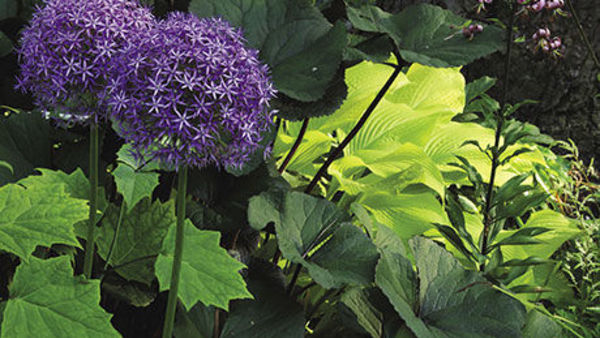














Comments
Log in or create an account to post a comment.
Sign up Log in